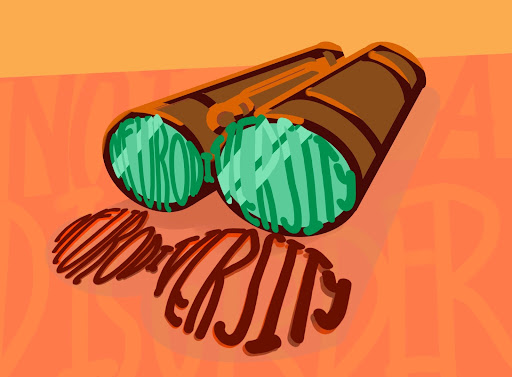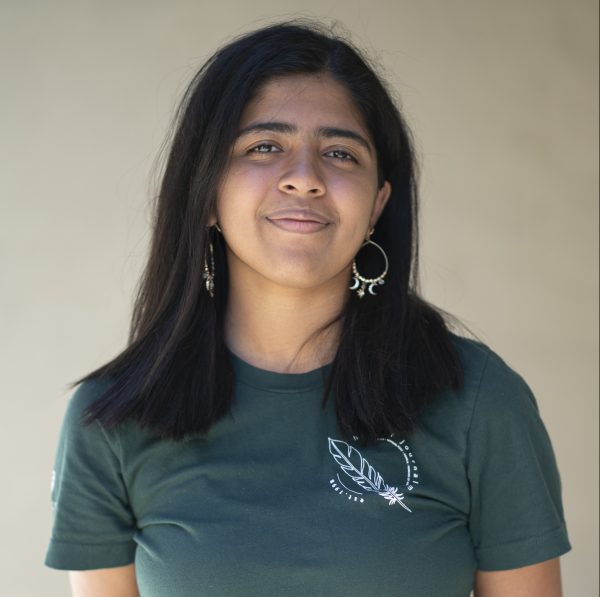The weight a word holds: Neurodiversity’s modern meaning in our community

Neurodiversity describes the idea that people experience the world around them in various ways, and that there is no right way of thinking. On average, about 15% of the U.S. population is neurodiverse.
December 7, 2022
Dyslexia. Down syndrome. Attention Deficit Disorder. When the word neurodiversity appears, these words might pop into your head. There are various preconceptions of neurodiversity, such as the fact that all neurodiverse people are the same, or that it is a mental health condition. But to upper school learning specialist and Neurodiversity Coalition adviser Kadar Arbuckle, neurodiversity travels beyond these categories.
“When I think of neurodiversity, I think it’s the idea of moving away from labels, and more towards the idea that all brains are different, because that’s what diversity is,” Arbuckle said. “And while some people might qualify for a label, that doesn’t mean that any two people with that same label experience the same thing. Neurodiversity is bringing that to the forefront, and highlighting and celebrating those differences.”
Neurodiversity describes the idea that people experience the world around them in various ways, and that there is no right way of thinking. On average, about 15% of the U.S. population is neurodiverse. Within that 15%, every 1 in 6 children from ages 3 to 17 is also diagnosed with a developmental disability, which can include autism, attention-deficit and hyperactivity disorder (ADHD), and more. In 1998, Judy Singer, a sociologist with autism, first used the term “neurodiversity” to address the neurological differences that appear in human brains, and, more specifically, to suggest that people can think beyond what is conceived as normal. Often, misunderstandings surface when people hear the term, most suggesting that neurodiversity is a mental health disorder.
“When people hear neurodivergent, they immediately think of the things that would make them different from what we would consider normal,” Arbuckle said. “When people hear ADHD, they think, ‘oh, it’s a deficit of your attention,’ when a lot of the time people who have ADHD tend to focus too much on things. Often, when it comes to stigmas, it’s just a fundamental misunderstanding of the strengths that come with them.”
Simon Kirjner (9), who has ADHD and dyslexia, first faced some challenges in middle school while taking Latin language courses. Due to his dyslexia, Simon knew that he would struggle with the reading, and through his time in the course, he also found he had trouble focusing, which led him to find out about his ADHD. Finding the language difficult, Simon instead started taking American Sign Language (ASL) courses for his language credit.
According to Simon, being neurodiverse entails various ways of thinking, which others can misunderstand as “less capable.” Despite the struggles one might face, distinctions do not make it harder for neurodiverse people to function.
“When people say mental disorders [when talking about neurodiversity], I’m not a fan of that,” Simon said. “I prefer mental differences. It’s not a disorder. It’s the fact that our brains function differently. And being neurodiverse doesn’t mean that we can’t take Honors classes, or we can’t do stuff that other students can. We are just as able to.”
Whether it’s fear of being blamed or judged, it can be hard to talk about certain obstacles. Hannah, who requested to omit her last name for privacy reasons, who has ADHD, remembers a fire drill that happened in her fourth grade class. Also struggling from overstimulation, Hannah recalls putting her hands over her ears to block out the blaring of the alarm, only for her teacher to tell her to remove her hands from her ears. Hannah’s teacher believed that Hannah would not be able to hear the directions.
“Some struggles come from the fact that this world isn’t built for people who have ADHD,” Hannah said. “We can miss instructions on a project, and then we don’t know how to do a critical part. And we end up putting that project off until it’s really late, and it’s really embarrassing to ask the teacher to go over a specific part that was mentioned weeks ago.”
Oftentimes, it can be hard to grasp certain concepts of a lesson for those with neurodiversity, and comments such as ‘oh, this was so easy, how did you not understand?’ can be discouraging and upsetting. It’s important to realize that everyone, not just those with neurodiversity, works differently.
Many neurodiversity conditions are still labeled as “disorders,” such as obsessive compulsive disorder (OCD) and bipolar disorder. Neurodivergence does not entail anything negative, Arbuckle believes, and rather than something that disrupts the way a brain functions, it’s how the brain works.
“Don’t be afraid to explore [who you are],” Arbuckle said. “Don’t think it’s something scary, like, ‘what am I going to uncover?’ It’s not going to uncover anything. You are who you are and the label you might find attached doesn’t change anything to who you are.”
Ultimately, Hannah believes that there is more to a person than their neurodivergence, and that they shouldn’t be stereotyped based on a word. Just like everyone else, neurodiverse people have hobbies, likes, dislikes and a spectrum of other traits behind what one person might see as neurodiverse.
“When you see someone that’s neurodiverse, don’t define them by their neurodiversity and differences,” Hannah said. “Because that just boils a person down to one little part of them. Learn to see a person as a whole person. I mean, yes, I may be neurodivergent, and yes, that does affect my day to day life, but I am so much more than that. I’m a cross country runner, and I do technical theater. And if you put me in front of a huge loudspeaker, no, I will not win that battle, but if you put me in front of a mile-long hill, I will win that fight.”
For more information about neurodiversity, visit the Stanford Neurodiversity Project and Harvard Health.


















![“[Building nerf blasters] became this outlet of creativity for me that hasn't been matched by anything else. The process [of] making a build complete to your desire is such a painstakingly difficult process, but I've had to learn from [the skills needed from] soldering to proper painting. There's so many different options for everything, if you think about it, it exists. The best part is [that] if it doesn't exist, you can build it yourself," Ishaan Parate said.](https://harkeraquila.com/wp-content/uploads/2022/08/DSC_8149-900x604.jpg)




![“When I came into high school, I was ready to be a follower. But DECA was a game changer for me. It helped me overcome my fear of public speaking, and it's played such a major role in who I've become today. To be able to successfully lead a chapter of 150 students, an officer team and be one of the upperclassmen I once really admired is something I'm [really] proud of,” Anvitha Tummala ('21) said.](https://harkeraquila.com/wp-content/uploads/2021/07/Screen-Shot-2021-07-25-at-9.50.05-AM-900x594.png)







![“I think getting up in the morning and having a sense of purpose [is exciting]. I think without a certain amount of drive, life is kind of obsolete and mundane, and I think having that every single day is what makes each day unique and kind of makes life exciting,” Neymika Jain (12) said.](https://harkeraquila.com/wp-content/uploads/2017/06/Screen-Shot-2017-06-03-at-4.54.16-PM.png)








![“My slogan is ‘slow feet, don’t eat, and I’m hungry.’ You need to run fast to get where you are–you aren't going to get those championships if you aren't fast,” Angel Cervantes (12) said. “I want to do well in school on my tests and in track and win championships for my team. I live by that, [and] I can do that anywhere: in the classroom or on the field.”](https://harkeraquila.com/wp-content/uploads/2018/06/DSC5146-900x601.jpg)
![“[Volleyball has] taught me how to fall correctly, and another thing it taught is that you don’t have to be the best at something to be good at it. If you just hit the ball in a smart way, then it still scores points and you’re good at it. You could be a background player and still make a much bigger impact on the team than you would think,” Anya Gert (’20) said.](https://harkeraquila.com/wp-content/uploads/2020/06/AnnaGert_JinTuan_HoHPhotoEdited-600x900.jpeg)

![“I'm not nearly there yet, but [my confidence has] definitely been getting better since I was pretty shy and timid coming into Harker my freshman year. I know that there's a lot of people that are really confident in what they do, and I really admire them. Everyone's so driven and that has really pushed me to kind of try to find my own place in high school and be more confident,” Alyssa Huang (’20) said.](https://harkeraquila.com/wp-content/uploads/2020/06/AlyssaHuang_EmilyChen_HoHPhoto-900x749.jpeg)












